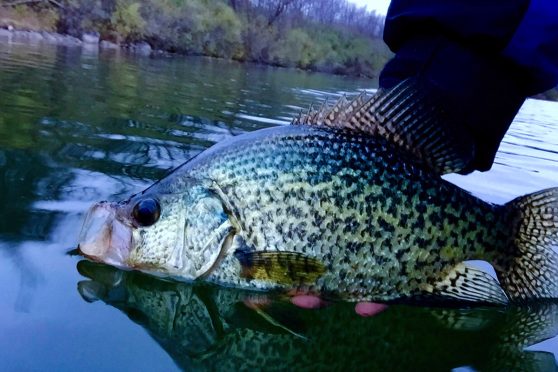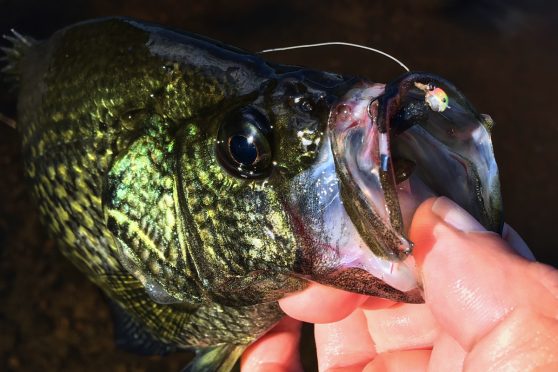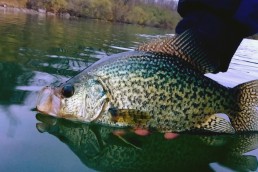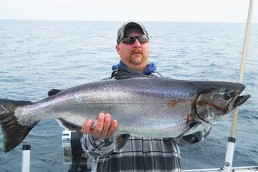What’s up…North
SHARE THIS POST
Pre-season Crappies
Continuous season offers early fix for those who can’t wait for opener
The second Saturday of May falls on the 13th this year, and it’s a date that’s circled on Minnesota anglers’ calendars, signifying the official start of the fishing season. It’s the opening date of the walleye, sauger and northern pike season, but it’s simply referred to as “fishing opener.” In the North, there are normally two or three painful weeks of open water after ice-out before this long-awaited Saturday arrives. Sometimes, though, Mother Nature gives us a few weeks of anticipation.
Being the somewhat impatient type, I prefer not to wait to get out on the water and take advantage of the panfish, for which we have a statewide continuous season.

I target crappies for these few weeks, as this species is often the first to push into the shallows after ice- out. Many fish’s initial shallow-water migration is spawn-related, however, this isn’t the case for pre-season crappies. These generally don’t think about spawn until the water is at least into the low 50s. Crappies move into the shallows for one reason, and that’s to feed.
Are you enjoying this post?
You can be among the first to get the latest info on where to go, what to use and how to use it!
If you’ve ever walked a shoreline in the spring as the ice is making its exit you’ve probably noticed how even the smallest sliver of sun-warmed water comes alive with invertebrates and insects. Soon after, small minnows and other smaller fish move in to prey on them. The crappies are usually not far behind, often beginning their surge under the ice as sunlight penetration increases. The combination of the shallow-water location and a desire to feed can make for some great pre-season opportunities.
Even though these shallow slabs are fairly aggressive, it doesn’t mean they can’t be a little skittish. Since these are often in just 1 to 2 feet of water, getting close to them can be tricky. Moving as slow and as quietly possible is a must. Disturbing a few fish is inevitable, so when you do just give them a little time to settle down. A long cast to isolated cover is the norm, so longer light-action rod and line combinations are ideal. Shallow, cover-oriented crappies tend to be ambush predators at this time, so stumps, fallen trees, and clumps of old vegetation all make excellent targets. Smaller panfish-profile plastics and hair jigs take plenty of fish, but at times a live minnow on a plain hook will seal the deal on the stubborn ones. Due to the extreme shallowness of the water, presentations under a small float can be a requirement to keep your offering in the strike zone long enough to entice a bite. A fly rod and a small fly or popper is also a great way to make an effective subtle presentation under these conditions, if that’s in your arsenal. I’ll confess that I’m a bit of a hack with a fly rod, but I can still catch plenty of fish with one this time of year.

As an added bonus, some of these early fish in the shallows are big ones, and I catch some of my biggest crappies of the year now. On that note, I encourage you to practice selective harvest. Big crappies aren’t easily sustained in a body of water. There is nothing wrong with keeping a few excellent eating crappies for a meal, but the days of filling limits with the largest fish in the system need to be put in the past if we want to continue to have giant crappies available to us in the future.
MWO
SHARE THIS POST
Did you enjoy this post?
You can be among the first to get the latest info on where to go, what to use and how to use it!
Scott Walsh
MidWest Outdoors works with more than 200 outdoor experts each year, who contribute articles based on their areas of expertise. MidWest Outdoors magazine offers more fishing and hunting articles than any other publication!



